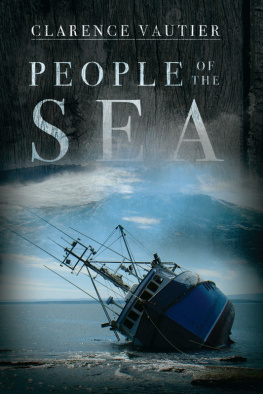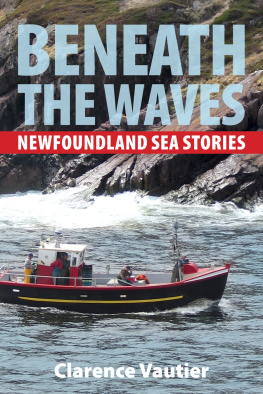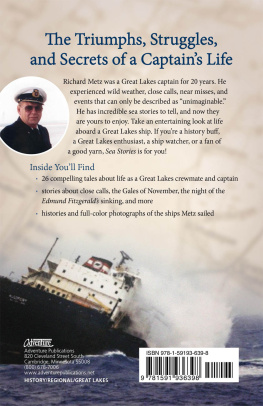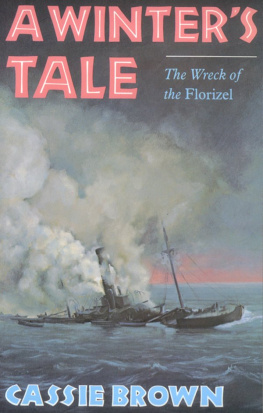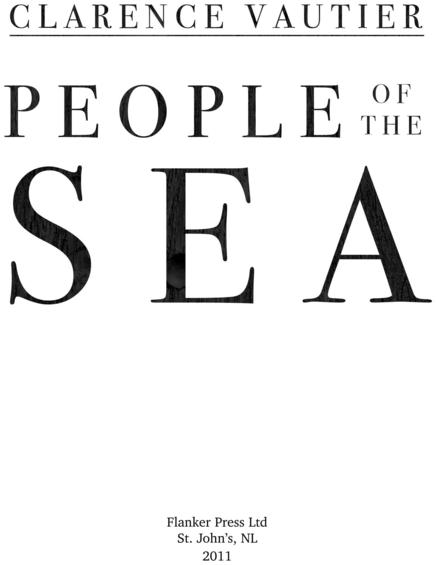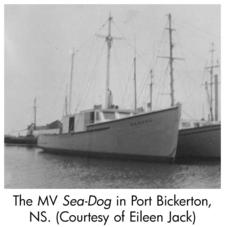People of the sea / Clarence Vautier.
Includes index.
1. Seafaring life--Atlantic Provinces. 2. Ship captains-- Atlantic Provinces. 3. Fisheries--Atlantic Provinces. I. Title.
FC2019. S42V382011 971.5'04 C2011-906662-9
ALL RIGHTS RESERVED. No part of the work covered by the copyright hereon maybe reproduced or used in any form or by any meansgraphic, electronic or mechanicalwithout thewritten permission of the publisher. Any request for photocopying, recording, taping orinformation storage and retrieval systems of any part of this book shall be directed to AccessCopyright, The Canadian Copyright Licensing Agency, One Yonge Street, Suite 800,Toronto, ON M5E 1E5. This applies to classroom use as well.
P. O. BOX 2522, STATION C
ST. JOHNS, NL A1C 6K1 CANADA
WWW. FLANKERPRESS. COM
We acknowledge the financial support of: the Government of Canada through the BookPublishing Industry Development Program (BPIDP); the Canada Council for the Arts which lastyear invested $20.1 million in writing and publishing throughout Canada; the Government ofNewfoundland and Labrador, Department of Tourism, Culture and Recreation.
PREFACE AND DEDICATION
I compiled two booksThe Coast of Newfoundland: TheSouthwest Corner (Flanker Press, 2001) and Beneath theWaves (Flanker Press, 2006)prior to this one,following many hours of researching newspapers andletters along with many phone conversations.
After these books were published, I spoke withmany more people who were involved in the commercial shipping and fishing industry, as well as their familymembers who had stories to tell. I came to realize therewere a lot more stories that needed telling. Hence, thisthird book: People of the Sea.
As time passes, it is becoming more challenging toget all the facts. I have tried my best to relay this information as accurately as possible. The stories containedherein were chosen strictly to illustrate the hard workand intelligence often displayed by the sea folk alongthe east coast of Canada, both past and present.
As the years go by, the future of the fishery hasbecome more unpredictable. We can only hope to hangon to the fishery for as long as possible. It was, and is,the backbone of Atlantic Canada. My goal is to preserveas much of this history as possible, through storytelling,from those who know the lifestyle best.
Throughout my research for this book, I called uponmany fishermen, some of them many times over. Theywere always willing to tell their stories and always eagerto help. Unfortunately, five of these fishermen passedaway before this book was published. I would like todedicate this book to them:
WALTER BOND
September 16, 1943 September 22, 2009
WILFRED BERKLEY MAUGER, SR.
April 6, 1949 July 26, 2008
GEORGE ORGAN
March 16, 1930 July 26, 2008
ALVIN ASHLEY SANGSTER
October 14, 1937 April 16, 2008
CHELSEA MILES
June 11, 1919 February 22, 2007
THE STORM OF FEBRUARY, 1959
The winter fishery along the shores of Newfoundland and NovaScotia has been very fruitful for the hard-working fishermen whohave fished these waters over the years. Unfortunately, therehave also been many mishaps and tragedies.
During the late 1950s, the fishing communities along thecoast of Nova Scotia were becoming home for a new style oflongliner. These new vessels were outfitted with the latest navigation and hydraulic equipment.
One Nova Scotia community well-known for the longlinerfleet was Port Bickerton, located along the eastern shore. Thefishermen of Port Bickerton were some of the first to acquire thenew style of longliners. These vessels were used to fish mainlyfor cod, halibut, and swordfish.
In the winter of 1959, the fishing fleets of Port Bickertonwere busy fishing cod on the fishing grounds 35 to 75 milesoffshore, depending on the weather conditions and the availability of the fish.
In the first week of February, 1959, the longlining fleet hadtheir trawls baited and were prepared for several days of fishingon the well-known Middle Bank fishing grounds. Middle Bank isfairly large, with its closest point 40 miles southeast of PortBickerton and the farthest 75 miles.
On Thursday, February 5, 1959, a small group of thefishing fleet were getting ready to depart Port Bickerton forMiddle Bank. They departed different times throughout theday depending on their exact location. They included the 55-foot MV Kenmore (Captain Aubrey Kaiser), the 57-foot MV NewStar (Captain Charlie Kaiser), the 55-foot MV Sea-Dog(Captain Burnell Hiltz), the 55-foot MV Rocket II (CaptainWesley Kaiser), the 49-foot MV Whitecap (Captain ClaytonHarpell), the 58-foot MV Karen Dawn (Captain Douglas Jack)and the 49-foot MV Elizabeth & Jenny (Captain AlvinSangster).
Although they departed different times, some of themwaited until the 6: 30 p.m. forecast Thursday evening. By leavingin the early evening together, they would arrive on the fishinggrounds early morning, the perfect time to set their trawl.
The weather was cooperating at the beginning of the voyageand as the fleet arrived on the fishing grounds their trawls wereset for the day. After a quick lunch the crew went below for ashort rest before beginning the task of retrieving the trawlseveral hours later.
As daylight approachedFriday, February 6, theweather was still cooperatingand the fishermen hadalready started their dayswork. During the operationof retrieving the trawl, someof the crew were busycleaning the catch whileothers were baiting the trawlto be set back out later thatday. This trawl would beretrieved the next day. If allwent well, they would returnto Port Bickerton Saturday evening.
However, the fishermen were unaware that a storm wasmoving into the area. The forecast Friday morning did not indicate gale- or storm-force winds but by 9: 00 p.m. the wind wasincreasing and in a hour it was gusting to gale-force.
As the weather deteriorated, the longlining fleet preparedtheir boats for the voyage back home instead of another day offishing, hoping to stay ahead of the storm and reach port safety.
Unfortunately the crew could not get ahead of the storm,and shortly after leaving the fishing grounds the wind wassteadily increasing from the northwest, and the temperature wasdropping below freezing. This was accompanied by poor visibility and moderate seas. With the wind blowing from the northwest, the fishing fleet would have to head into the wind all theway back to port, thus accumulating ice from the freezing spray.
As the night progressed, the fleet managed to hold their own,and slowly but surely they were making their way back to port. Asmidnight passed and morning approached, some of the fleet weregetting close to shore, close to home. Captain Burnell Hiltz (aged49) and his crew; John Horton (aged 17), Harvey Taylor (aged 55),and Ernie Ealer (aged 20), aboard the MV Sea-Dog were ahead ofothers in the fleet but fate had a different plan. While approachingPort Bickerton Harbour in zero visibility and running seas, the MV

